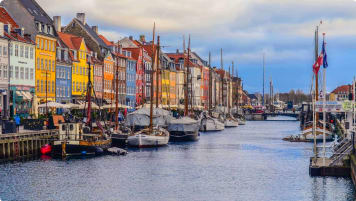The Viking's Woollen Sails
Vikings and Their Use of Wool for Sails This educational article aims to help senior travellers immerse in the world of Vikings before they take part in a memorable travel experience across Scandinavia. It helps…
15 Mar 19 · 7 mins read

Vikings and Their Use of Wool for Sails
This educational article aims to help senior travellers immerse in the world of Vikings before they take part in a memorable travel experience across Scandinavia. It helps appreciate Viking men and women’s amazing craftsmanship which helped them conquer or at least reach parts of Western and Southern Europe and North America and establish settlements, some of which are preserved as Viking sites. According to Kassia St Clair in her book The Golden Thread: How Fabric Changed History, when the Gokstad ship, dated 850 AD, was found in 1879 as a burial site for a distinguished man surrounded by treasures and animals, an interesting discovery accompanied the ship (2018, p. 98). Not only was it rare to find such a beautifully preserved ship intact given the Viking funeral tradition of setting ships ablaze, but also pieces of its large red and white sail were found made entirely of wool. Wool was a staple to Viking clothing for its warmth, even in damp conditions, and relative ease to clean (Lise Bender Jørgensen cited by Claire Eamer 2016). However, it seems an odd material to choose for a sail as the kinks that provide insulating pockets of air for warmth are essentially holes that air can pass through. Moreover, wool is notorious for absorbing and retaining water for a long time. This article will take a brief look at the Viking’s use of wool for its sails, including their innovative approach to producing long-lasting windproof sails to which their successes as a sea-faring group can be attributed. It will explore the laborious methods of woollen sail production that Vikings perfected which allowed them to cross the Atlantic Ocean and land in the Americas well-before Christopher Columbus ever dreamt about it, nearly 500 before Columbus was born (St Clair 2018, p. 102).
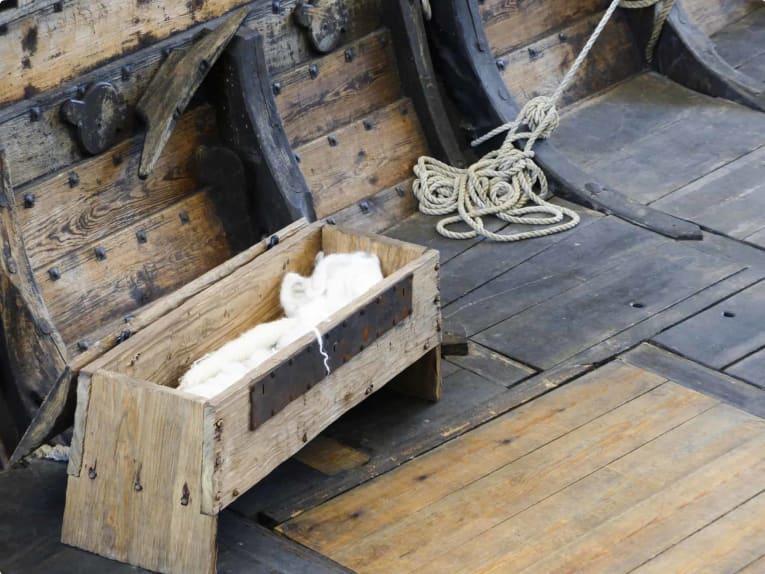
The Importance of Sails
Sails are an important invention for humanity as a whole. No new lands would have been explored or technology created without this harnessing of the wind. Sails were thought to have emerged from the Egypt and their use of the new wind technology to allow for boats to move up the Nile river, as evidenced by a number of hieroglyphs depicting boats with sails on them (St Clair 2018 p. 105). However, according to St Clair, archaeological findings in the Arabian Gulf pre-date theories about sails’ Egyptian origins (2018 p. 105). Rather, a reed-bundle boat with barnacles and pottery illustrating a boat with masts from this site are now the earliest known artifacts proving sail use. It was only centuries later that the vikings added sails to their boats, and used materials at their disposal. This was vital for the Vikings who viewed boats as a symbol of pride and power, and who were renowned for their brutal looting ways on near-by, as well as far-away, lands. Without sails, they may not have been able to travel as far as Iceland, let alone UNESCO-listed L’Anse aux Meadows, an 11th century Viking site in Newfoundland, Canada.
Specialised Sheep
With their exploration and expansion of territory, there was a demanding pressure put on the Viking people to supply wool, both raw and textile. It was the circle of Viking life, as more wool was need, so was more land to rear the sheep needed to harvest the wool. In fact, textile researcher Amy Lightfoot suggests that land for pasture may have been as much a driving force for Viking expansion as looting or trade (Claire Eamer). Thus wool production became the centre of Viking communities and families banded together to mass-produce wool. St Clair indicates that each family likely reared a dozen or so sheep (2018, p. 108). However, it is estimated that the wool of at least 400 sheep were required to provide enough wool to fully equip one typical Viking vessel with all the textiles needed for their journey, including clothes, blankets, sails. By these estimates, nearly 2,000,000 sheep needed to be rooed to provide enough wool for the entire Viking fleet (2018, p. 114).
The sheep that the Vikings shepherded were also a very unique variety that provided a much more hardy wool for Viking use. The breed found on the Viking islands, including Iceland, Norway, Faroe Islands and some Scottish islands, were highly adaptive due to the harsh conditions they lived in, such as small grazing lands and cold damp weather. For example, on some islands, the sheep adapted to the rocky shoreline and grazed on seaweed (St Claire 2018, p. 108). Their sheep were well suited to providing wool that could be used for sailcloth because they had dual-wool layers, a course outer layer with a high lanolin concentration for waterproofing; and a soft, insulating undercoat (p.108).

A sheep on the Faroe Islands, bread for viking wool
Making Viking Sails
So communities had to band together to collect enough wool and families often worked as a team to prepare the sailcloths. This was done in 5 steps, as outlined by St Clair (2018):
- Families rooed the sheep. In the spring, when the sheep naturally shed their wool, families would work together to roo, which is the act of pulling the shedding wool from the sheep as opposed to shearing (p 109).
- The family would then sort the wool into the two layers, as they were treated differently. A little fish oil would be added to the insulating wool to increase softness before spinning (p. 109).
- Spinning the wool into yarn was primarily left to the women. This was a highly skilled task as the two different wools were spun differently to achieve two distinct yarns that worked harmoniously in the next steps to achieve a durable and effective sailcloth. The course outercoat was spun tightly clockwise for strength; while the soft undercoat was spun loosely counter-clockwise for better fulling later on (p.110). The former was always used for the warp in a weave, and the latter was used for the weft.
- After the women spun the wool into yarn, they would weave the yarn in one of three ways, depending on the region they were from. They may have used a standard under-over weave of the warp and weft, or they may have doubled the weft along the warp, or doubled the warp and weft (Andersen 1995, p. 5)
- Next, the family would full and dry the fabric. Fulling is more or less the same as felting. Material is soaked in water and pressed together to mesh the fibres together and create a large clump of material, with fewer wholes than the weaved product. According to St Clair, another method used was with large bodies of water; ‘cloth would simply be placed just within the tideline and weighed down with stones, letting the ebb and flow of the water do the job’ (p.110). The sailcloth would then be stretched into a square and dried.
- The final step would have been to coat the sailcloth in horse fat or fish oil and ochre. Together, the two would act as a waterproofing sealant, in which the oil or fat would provided added a smoothing layer of water repellent, and clay would plug any remaining gaps in the weave (p.110).
The entire process from wool collection to a finished sailcloth took approximately two years to complete. To prepare all of the sails and supplies for a typical Viking vessel would take 10 years, and for a large warship, nearly 60 years (St Clair 2018, p. 114). But, the well-designed sailcloths, specialised sheep, hard labour, and meticulous skill were of the highest quality and succeeded in harnessing the wind to bring masses of Viking ships to new lands, and, when cared for properly, could last for upwards of 50 years.

Mandatory Production
One guess as to why so much time and effort was put into making the best quality sails is that family and community members would potentially be using the sails. Viking code often called for men’s mandatory conscription to the army during times of war. In fact, in 1309, King Håkon V of Norway passed a law that made it mandatory for every region under his reign produce and maintain at least one warship and all of its provisions in each region (St Clair 2018, p. 111). Because it was the local men that would be manning the ships, their wives, mothers, and daughters who weaved the sails, took great care in making the highest-quality sails for their spouses’ and families’ safe travels. Throughout King Håkon V‘s reign his people often went to war for him against Denmark and Sweden, and so used the ships they were charged to maintain.
Travelling to America
In 1893, a recreation of the amazing Gokstad Viking ship found 14 years earlier set sail from Norway to America to see how the boats would fare in a cross-Atlantic voyage. After a year’s work in creating a mirror image of the ship and its sails to prove whether it was possible for the relatively shallow longboats could successfully cross the ocean, an 11-man crew spent two months travelling and reached Newfoundland, then New York and Chicago. This voyage was a testament to the to the impressive ship- and sail-building of the Viking community.

Related Tours
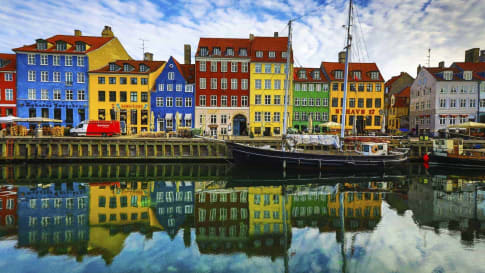
13 days
Jun, SepScandinavia tours for mature travellers
Visiting Denmark, Norway
Uncover on a small group tour for couples and solo travellers, a Viking past and view of the world’s biggest fjords on this journey through Scandinavia. In low-lying Denmark our small group journey takes us to visit the Zeeland, the sea land, and our program includes the vibrant capital of Copenhagen. In Norway we travel through endless forests, skirting great fjords to Bergen.
From A$14,995 AUD
View Tour
17 days
May, SepIceland cultural and wilderness small group tour
Visiting Iceland
Our escorted tour gives guests an insight into the history of this Icelandic nation. Travelling as a small group, our daily itineraries explore the Jokulsarlon Glacier Lagoon and others, national parks and majestic waterfalls as we learn about Iceland’s natural heritage and its Viking past from experienced local guides. There is a single supplement for solo travellers.
From A$18,995 AUD
View Tour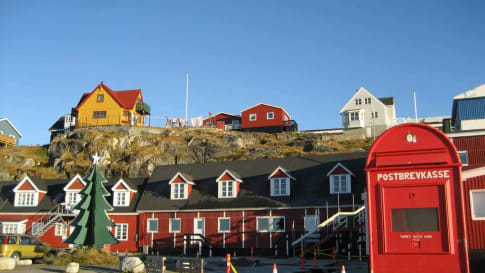
4 days
Sep, MayDiscover Greenland | Small Group Tour for Seniors
Visiting Greenland
Greenland is the largest island in the world, the majority of it lies above the Arctic Circle, and it is part of Denmark. Few places are quite so difficult to reach, we fly from Reykjavik to Nuuk. During this small group tour we have ensured that our travellers gets to this conversation-stopping land and, while we are there we obtain the most comprehensive overview of this vast landmass. We visit during the summer, experiencing the burst of seasonal flora, which caused the early voyagers to name it Greenland.
From A$6,450 AUD
View Tour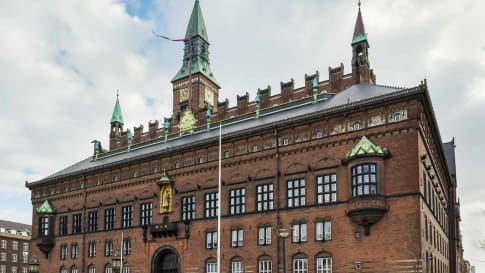
20 days
Aug, MayTour of Denmark's Culture & History
Visiting Denmark
Experience group travel for couples and single travellers to Denmark. This European tour provides a travel experience based around key destinations and itineraries that provide authentic experiences in Denmark .A single supplement applies for solo travellers.
From A$15,895 AUD
View TourAbout Odyssey Traveller

We specialise in educational small group tours for seniors, typically groups between six to 12 people from Australia, New Zealand, USA, Canada and Britain. Our maximum number of people on a tour is 18 mature aged travellers. Typically, our clients begin travelling with us from their mid 50’s onward. But be prepared to meet fellow travellers in their 80s and beyond! Both couples and solo travellers are very welcome on our tours. We have some 150 tours and offer 300 scheduled departures on offer each year. Odyssey has been offering this style of adventure and educational programs since 1983.
Odyssey Traveller is committed to charitable activities that support the environment and cultural development of Australian and New Zealand communities.
Odyssey Traveller scholarship for Australia & New Zealand University students.
We are also pleased to announce that since 2012, Odyssey has been awarding $10,000 Equity & Merit Cash Scholarships each year. We award scholarships on the basis of academic performance and demonstrated financial need. We award at least one scholarship per year. We’re supported through our educational travel programs, and your participation helps Odyssey achieve its goals. Students can apply for the scholarship by clicking on this link to find out more details.
Join our loyalty program when you join an international small group tour.
Every International small group tour taken typically contributes to your membership level in our Loyalty Program for regular travellers. Membership of the alumni starts when you choose to take your first international small group tour with Odyssey Traveller, discounts in tour pricing for direct bookings accrue from your third tour with Odyssey Traveller. To see the discounts and benefits of being a Bronze, Silver, Gold, and Diamond alumni member with us, please see this page.
For more information on Odyssey Traveller and our educational small group tours, visit and explore our website, and remember to visit these pages in particular:
- Terms and conditions applicable for booking an Odyssey Traveller tour.
- FAQ’s about Odyssey Traveller
Alternatively, please call or send an email.

